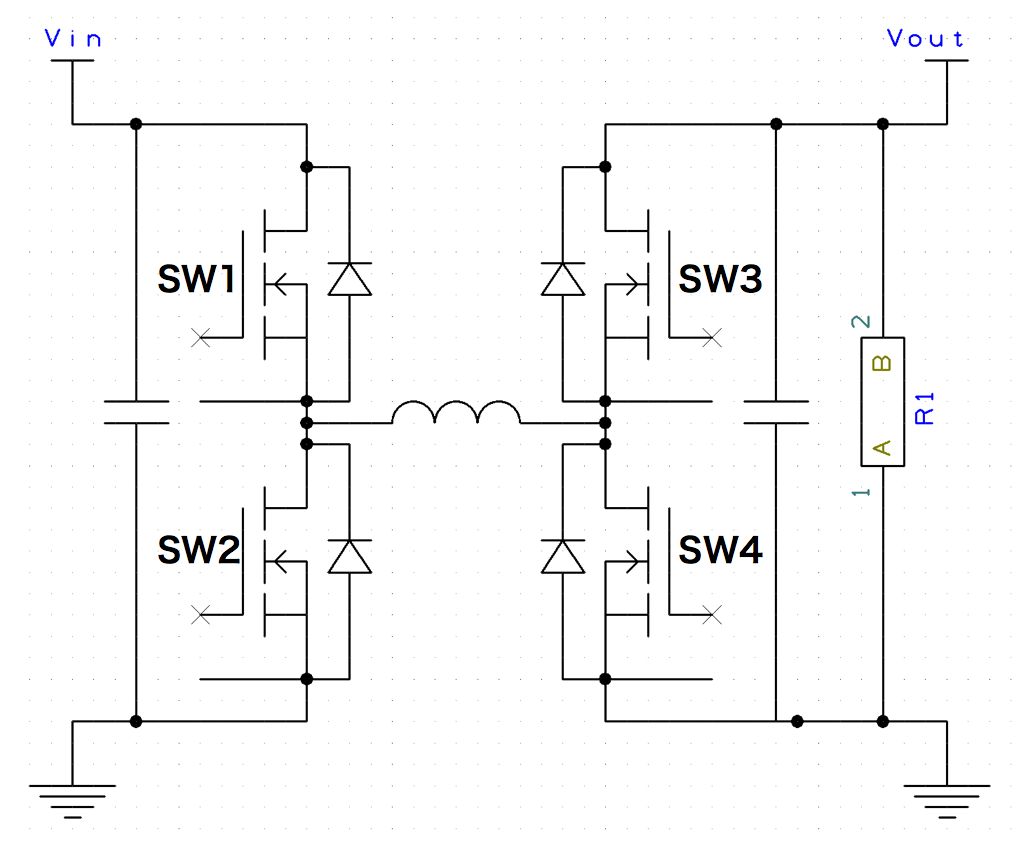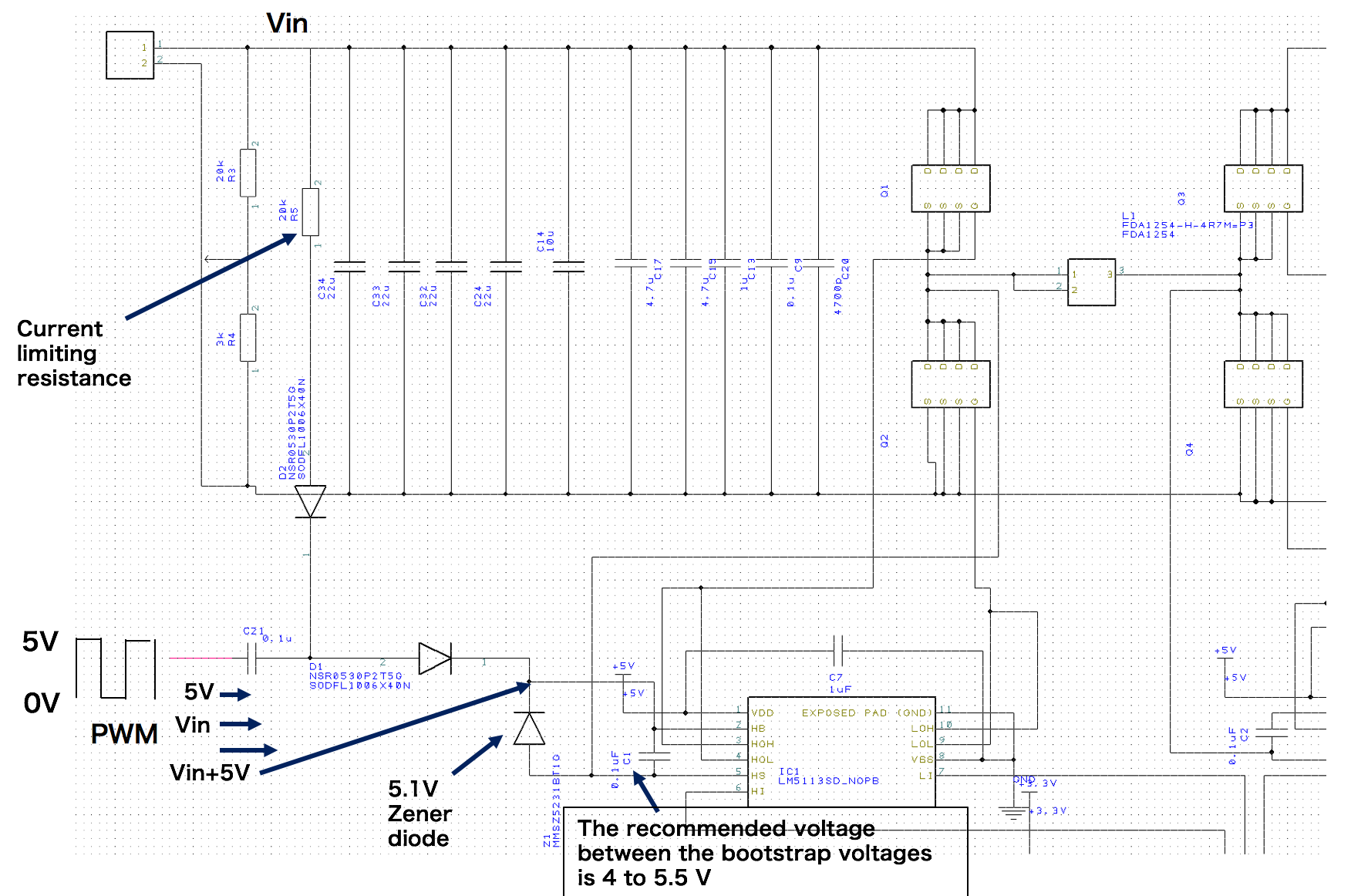Other Parts Discussed in Thread: LM5175, LM5113
I’m sorry for my poor English.
I am studying H-bridge Buck-Boost converter. H-bridge Buck-Boost converter has 3 modes; Buck mode, Buck-Boost mode, Boost mode. When in Boost mode, SW1=ON, SW2=OFF, SW3=SW4=ON or OFF.So, SW1 needs Duty100%.
But when the drive method of the high side mosfet is set to the bootstrap method, the power of the bootstrap capacitor is exhausted, and 100% duty is not achieved. I used ucc27201(gate driver). When trying to operate at 100% duty, Undervoltage Lockout (UVLO) worked and Sometimes the duty ratio was not 100%. Undervoltage Lockout makes boost mode work. But Undervoltage Lockout causes noise.
How can I achieve 100% duty? Is Undervoltage Lockout the best method? Or Should I add another circuit like a charge pump circuit?
my application is Vin, Vout=3~20V, Iin, Iout=0~3A. I am using digital control with MCU.I will use lm 5113(Gate Driver) in the future. I am not considering pmos for the convenience of my application.



